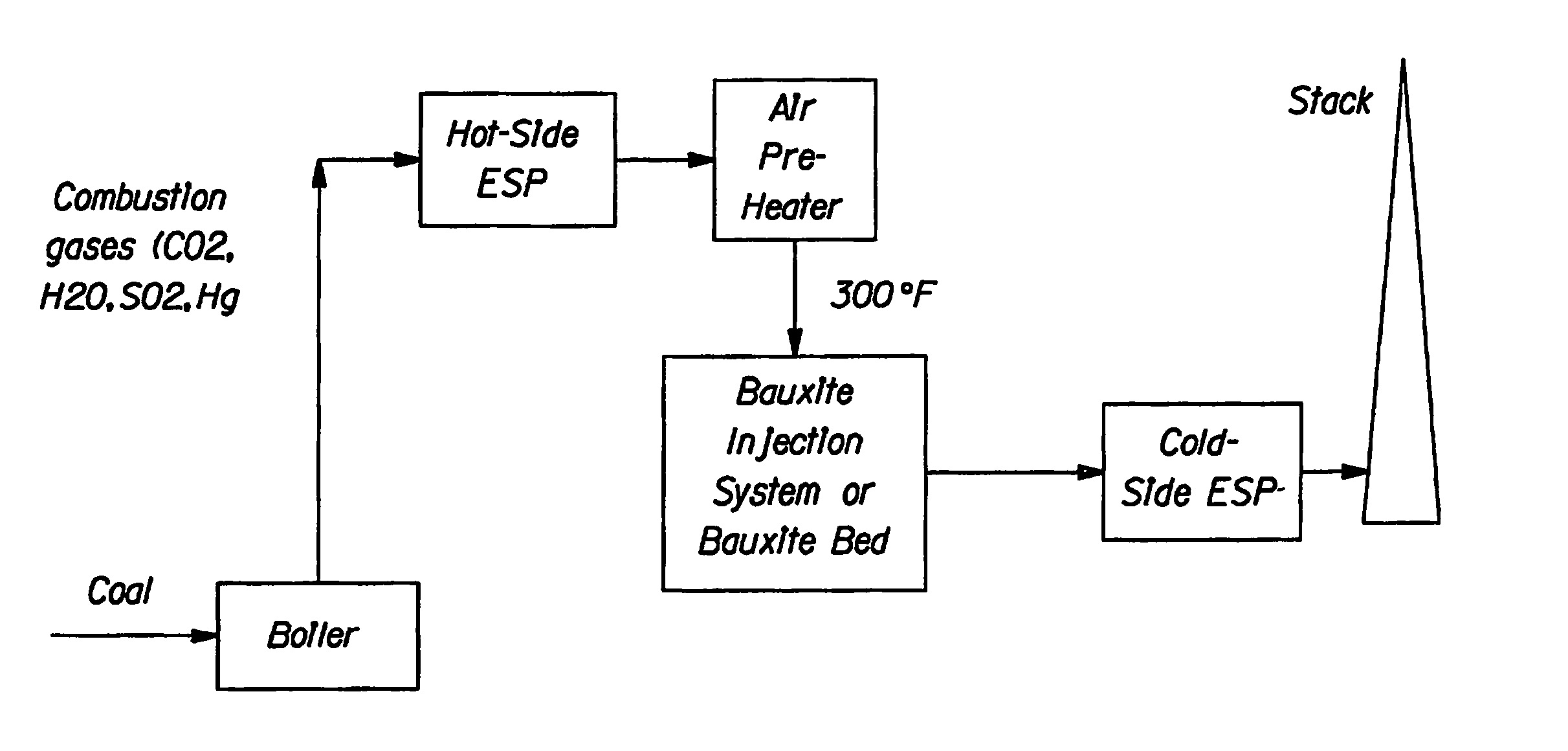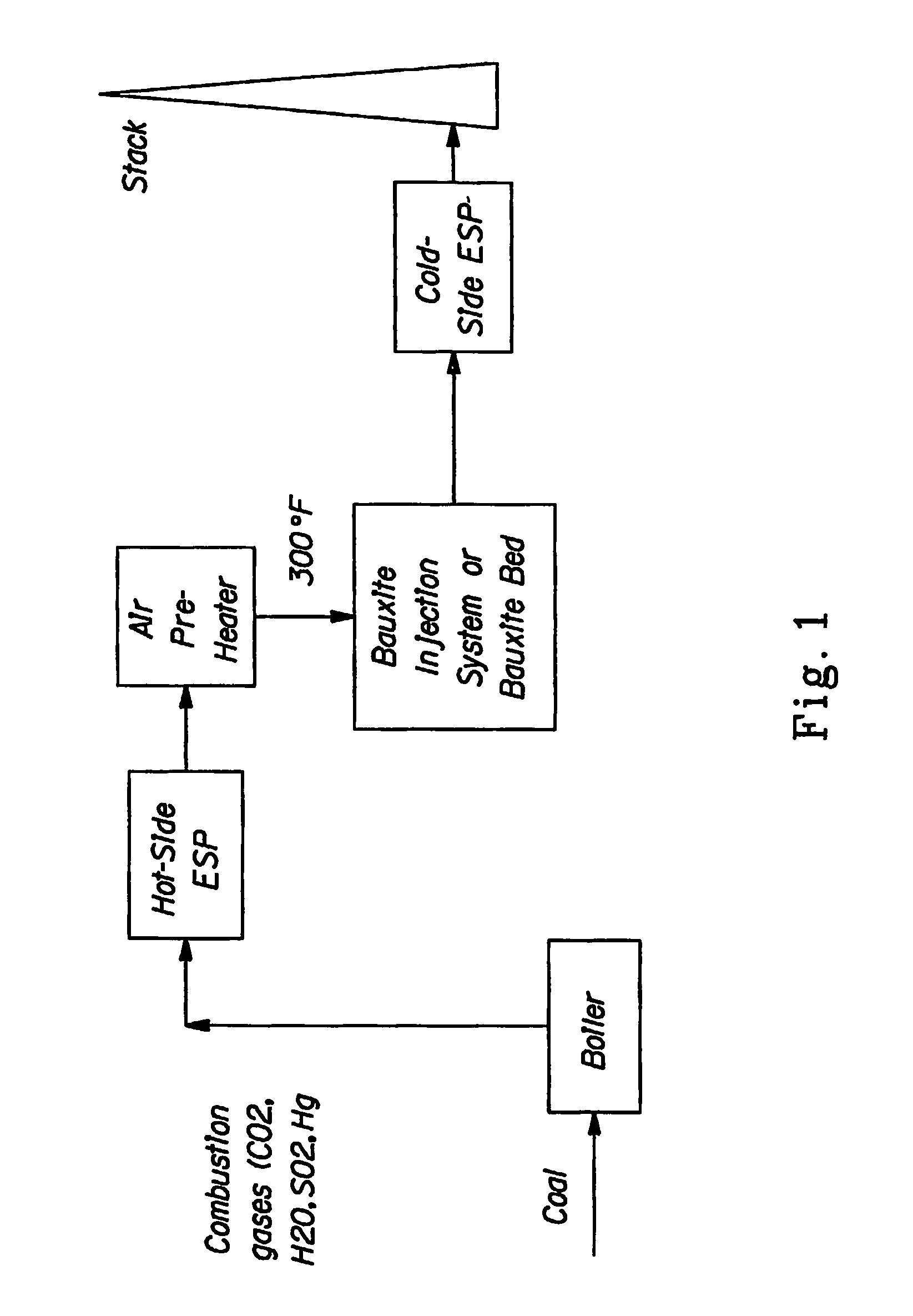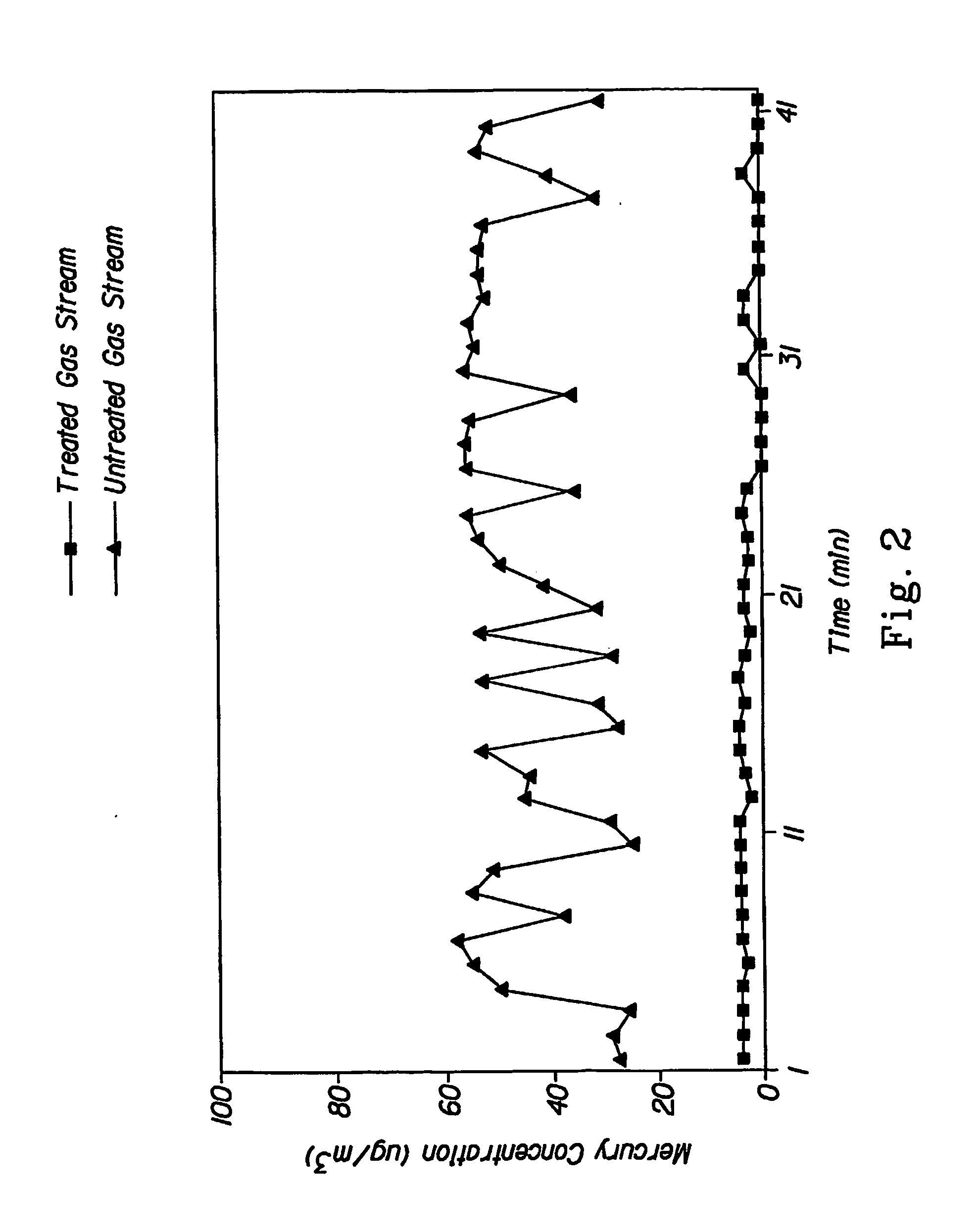Treatment of environmental pollutants with mineral ores
a technology of mineral ores and environmental pollutants, which is applied in the direction of quarries, waste water treatment, and other chemical processes, can solve the problems of increasing environmental threats, affecting human health and the ecosystem, and affecting the quality of environmental pollutants, so as to prevent the migration of environmental pollutants, reduce environmental pollution, and reduce environmental pollution.
- Summary
- Abstract
- Description
- Claims
- Application Information
AI Technical Summary
Benefits of technology
Problems solved by technology
Method used
Image
Examples
example 1
[0027] The first pollutant that was tested was arsenic. There is a great deal of interest in arsenic, especially because a reduction in the regulatory limit for this pollutant in drinking water has recently been made. The limit (health standard in the U.S.) for arsenic in drinking water has been reduced from 50 μg / L to 10 μg / L.
[0028] The Table 1 shows the results of several batch tests. Batch tests were conducted in small bottles containing a locally obtained groundwater. Arsenic was spiked into the water to levels of approximately 1,400 μg / L. The results show that arsenic levels in the water were reduced from approximately 1,400 μg / L to between about 19.8 μg / L and 86.4 μg / L when the mineral was added to the water and shaken on a shaker table for 24 hours. Nitrogen was bubbled through the water before the tests in order to remove dissolved oxygen and maintain the arsenic as As (III), versus As (V). The lower-valent arsenic is more difficult to treat and was considered a greater cha...
example 2
[0030] Table 2 shows a second series of tests that were conducted to further test the performance of the minerals. Specifically, the two objectives of the second series were to: (a) determine whether the minerals can remove arsenic to the low levels required by the imminent new regulatory standard of 10 μg / L, and (b) to determine whether the arsenic would stay sequestered by the mineral or would re-dissolve over time. The target initial amounts of arsenic (as As [III]) that were spiked into groundwater were 100 μg / L, 50 μg / L, and 25 μg / L. The corresponding control bottles (no mineral phase added) showed 85.7 μg / L, 40.8 μg / L, and 20.1 μg / L respectively, after one day of mixing. After one day of mixing, the bauxite appeared to be the most efficient in arsenic removal, removing the arsenic present in the groundwater in all six bottles to less than 10 μg / L of arsenic, which is both the imminent regulatory standard and the present analytical detection limit.
TABLE 2Treatment of varying ...
example 3
[0034] The tests of Examples 1 and 2 are repeated for bauxite, magnetite, goethite, and hematite, except that mercury is used as the pollutant at a concentration of 10 μg / L, 20 μg / L, and 40 μg / L. Mercury is removed in these tests.
Microorganisms
[0035] Bauxite and allied mineral ores (e.g., copper, manganese, or titanium ores) are expected to be effective in adsorbing and inactivating pathogenic microorganisms that may be encountered in soil, water, or air environment. Therefore, these ores can be used for applications, such as (for example): [0036] 1. Protection of drinking water supplies through: [0037] (a) installation of a subsurface mineral ore barrier in the path of a migrating pathogen plume; or [0038] (b) running the extracted water at a drinking water plant through a cartridge consisting of the mineral ore. [0039] 2. Protection of indoor air from atmospheric releases of microbial pathogens by installing a mineral ore cartridge in the heating, ventilation, and air condition...
PUM
| Property | Measurement | Unit |
|---|---|---|
| Temperature | aaaaa | aaaaa |
| Fraction | aaaaa | aaaaa |
| Fraction | aaaaa | aaaaa |
Abstract
Description
Claims
Application Information
 Login to View More
Login to View More - R&D
- Intellectual Property
- Life Sciences
- Materials
- Tech Scout
- Unparalleled Data Quality
- Higher Quality Content
- 60% Fewer Hallucinations
Browse by: Latest US Patents, China's latest patents, Technical Efficacy Thesaurus, Application Domain, Technology Topic, Popular Technical Reports.
© 2025 PatSnap. All rights reserved.Legal|Privacy policy|Modern Slavery Act Transparency Statement|Sitemap|About US| Contact US: help@patsnap.com



